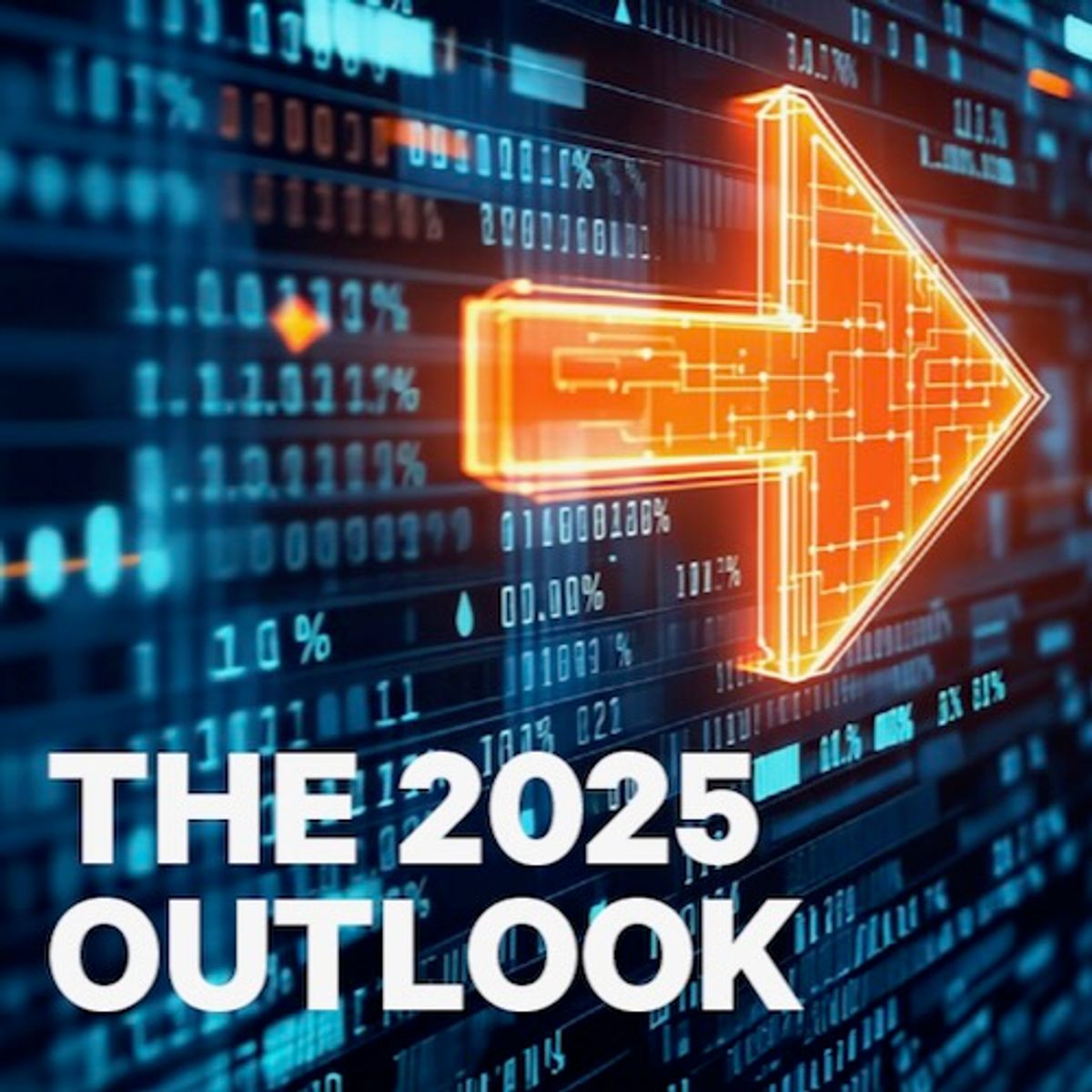World
Europe, universities and industry launch Emotion AI masters

EUROPE
A masters in Emotion AI – an emerging subset of artificial intelligence that interprets and responds to human emotions – kicks off next year across eight universities in six European countries. The masters is blended and transdisciplinary, at the cutting edge of applied AI and will spin off modules for mass AI upskilling.
It is also interesting as an example of Europe’s expanded number of postgraduate degrees produced in partnerships between universities and the private sector, in this case under EIT Digital, the digital arm of the European Institute of Innovation and Technology (EIT), which is an independent body of the European Union.
In February this year, EIT Digital and 12 higher education, research and technology organisations announced the launch of EMAI4EU, a four-year project to enhance education and train professionals in the field of emotion artificial intelligence. EMAI4EU stands for EMotion Artificial Intelligence specialists for Europe.
The transdisciplinary masters is a scientific double degree, awarded by two of the university partners where the graduates studied. It is grounded in data science but also draws on other fields such as psychology, law and ethics – as well as the EITs’ hallmark academic focus on innovation and entrepreneurship through a compulsory minor course.
“Graduates will be able to understand and contextualise the use of the technologies they’ve learned about, within society,” said Diva Tommei, chief innovation, education and marketing officer at EIT Digital. “Emotion AI promises to improve human-machine interaction, but specialised training is essential to ensure its ethical and responsible development.”
Emotion AI – also known as affective computing or emotional AI – emerged in the 1990s, spurred by MIT’s Professor Rosalind Picard’s Affective Computing, a book about how to give computers emotional intelligence skills. Emotion AI has gained importance with recent developments in AI and large language models.
The field is exciting and rapidly evolving, said Professor Jean Martinet, an expert in neural networks for machine learning at France’s research-intensive Université Côte d’Azur, a key university partner for EMAI4EU. He is involved in developing and delivering the curriculum for the two-year blended masters, which launches in September 2025.
An indication of the growing significance of Emotion AI came from an ongoing survey of companies. “We are trying to estimate what level of awareness companies have regarding upcoming technologies, what their needs could be and what they would think a relevant curriculum could be.
“It’s surprising to see the large number of companies who are aware of and expecting this kind of technology to arise in the [few] next years,” Martinet told University World News.
EMAI4EU – Rationale and information
There are plenty of masters in AI, but EIT Digital benchmarking for Europe showed no masters offered in Emotion AI. “Emotion AI is something we are pioneering in Europe,” Tommei told University World News.
The application of AI technologies is driving individual, business and economic growth, said EIT Digital in a February announcement about EMAI4EU. Big data generated by increasing digitisation is growing at a rate of 40% each year.
There are two key aspects to the masters: training AI experts for digital development and transition, and encouraging research into this promising field of AI. It is also about developing partnerships between academia, research and innovative businesses.
The EMAI4EU consortium involves eight higher education institutions, three SMEs, a large company and EIT Digital itself. The organisations involved are LudoTIC in France, Medispa Srl from Italy, and Saturno Labs and Tech Valley Management in Spain.
From higher education are Université Côte d’Azur and Université de Rennes in France; Polytechnic University of Milan and University of Trento in Italy; the University of Turku in Finland; Eötvös Loránd University in Hungary; the Technical University of Madrid in Spain; and Eurecom, a graduate school and research centre in digital sciences in France.
Some of the EMAI4EU universities have long been partnering on EIT Digital masters programmes. Since its launch in 2011, around 3,500 people have graduated from EIT Digital postgraduate programmes. There have been 17 universities involved over the past year, tapping into an ecosystem of 350 industry partners.
“We need partners who represent and understand those worlds, to contribute meaningfully,” said Tommei.
“The point of it all is for us to curate long term relationships with partners that go beyond one programme and are continued in time through a common mission and vision. That’s what keeps us together,” she continued.
“The Emotion AI project is definitely the most cutting edge that we are working on today. But we also have Masters School programmes that are being updated through similar calls to the ones that gave us EMAI4 EU.” They are in fields like robotics, cybersecurity, embedded systems, semiconductors and, hopefully in future, high performance computing.
What is Emotion AI?
So what exactly is Emotion AI? The consortium is thrashing out a common definition, but to Jean Martinet: “it’s everything related to how a computer system can take into account the emotional status of a user. It’s in both directions, in and out.
“How a computer system could read your emotions or understand your state of mind, to adapt what it’s doing to help the user; on the other side, how a system could simulate an emotional state of mind, or could take into account the emotional setting – which it’s currently not doing – to better adapt and make the user interaction maybe more human or more sensitive”,
Emotion AI detects and interprets people’s emotional signals primarily through visual analysis – in text using technologies like natural language processing and sentiment analysis, but also in other formats such as audio and video. There are other techniques, for instance estimating the diameter of the pupil, that need perhaps an infrared sensor or skin conductivity or heart rate – any kind of bio signal that can inform the digital system.
There is a growing number of start-ups in the field of Emotion AI, for example in the area of facial movement analysis or, for the sports world, gait analysis, said Tommei. “Emotion AI tools can be used to improve human-machine interaction, but also customer service, marketing, healthcare, education, entertainment. Anywhere human emotion plays a role. Allowing a feedback loop to enter into the conversation changes the game.”
One challenge for Emotion AI development is that the quality of the outcome of AI depends on the quality of the input data, where there are often problems. Also, development is needed for Emotion AI to be more effective. For instance, an AI tool may be able to translate a facial expression to an emotion, but cannot consider the context around that emotion. Further layers of complexity are needed before the AI can deliver the full picture.
“Emotion is spurred by not just one variable, but a multitude of variables,” said Tommei. “So this becomes a multivariable problem that is exponentially harder to solve and therefore needs an exponential increase in the amount of data and computing power. We’re heading towards being able to be granularly responsive to a human emotion through a machine.”
Developing the masters
As a key university in the EMAI4EU masters, Côte d’Azur is coordinating development of the curriculum. The university started working with EIT Digital a decade ago, including on masters tracks in data science, fintech and autonomous systems. There are around 30 masters students enrolled at any time over both years of these masters programmes.
Most of the EIT Digital courses Université Côte d’Azur is involved with are relevant for the Emotion AI programme. Courses that already exist will be gathered together with new courses related to Emotion AI. Ultimately, the masters will be highly transdisciplinary, said Martinet. He is assisting Professor Francoise Baude – who leads EIT Digital’s activities at the Université Côte d’Azur – to develop and run the new masters.
“There is a real added value. We’ve looked at other course offerings in Europe and the United States, and there are currently few masters that deliver this combination of expertise.
“It’s worth highlighting that a main added value of EIT Digital curricula is that we give to students not only technical knowledge – they already have strong technical and disciplinary knowledge in the target area of expertise – but also innovation and entrepreneurship courses that give them very good knowledge about the entrepreneurship landscape,” said Martinet.
“That makes them very skilled postgraduates who have strong technical knowledge and also who can, for instance, start a company at the end of the curriculum, or understand very well how a large company works and evolves by pushing innovation ideas,” said Martinet.
The survey that Martinet is involved in has shown that most companies think it is important to have technical knowledge in areas like emotion recognition and signal processing. Importantly, they also want postgraduates with other understandings, such as in psychology.
“From the very beginning we have sent invitations to colleagues in other disciplines, like arts and humanities, ethics and law, to share their opinions and propose courses. It’s nice to see that the choices we have made since the beginning are confirmed by the companies,” said Martinet.
Numerous academic colleagues from other departments – among others, from neuroscience, psychology and economics – have helped to develop the syllabus and will offer courses on, among others, decision making processes, with someone from the cognitive science lab.
Another example is experts in natural language processing – a machine learning technology that enables computers to interpret, manipulate and understand human language – who will give a course on discourse and dialogue modelling, to model interactions between a machine and a human. A decision theory expert will talk about ethics and emotional aspects of decision making.
Students and jobs
“There will be a broad and diverse list of elective courses for students,” Martinet said. For EIT Digital masters programmes currently running, there are student applications mostly from Europe but also from around the world.
The students usually have a computer science background, some have a mathematical background and others business or marketing. Some come straight out of a degree, others have worked for a number of years and want to upskill. Many are attracted to a masters that also incorporates innovation and entrepreneurship fields of study.
When students graduate from the Emotion AI masters, they will have two certificates, one each from two partner universities. “So there is geo-mobility involved as well that helps with the European mandate of experiencing different cultures across Europe,” said Tommei.
Thus, graduates will have a masters and a specialist degree from two top-level universities in Europe. They will also be awarded an EIT Digital diploma testifying that they completed the innovation and entrepreneurship minor. “These students are very sought for on the market.”
The backdrop – EIT Digital
There are nine Knowledge and Innovation Communities in Europe. They are public-private partnerships that coordinate more than 2,400 partners from research, academia and business, leveraging networks and expertise to solve global challenges in: climate, cultural heritage, digitalisation, energy, food, health, raw materials, manufacturing, and urban mobility.
The overarching European Institute of Innovation and Technology is part of Horizon Europe, the EU’s massive research funding system.
EIT Digital was created to bridge the gap between research and innovation and to develop products, services and businesses that will increase Europe’s digital competitiveness and quality of life. It is of strategic interest, given Europe’s twin digital and green transitions.
With more than 350 current partners, EIT Digital operates in the digital deep tech space and says it represents the largest digital innovation ecosystem in Europe. Aside from the thousands of postgraduates it has produced, the agency has launched more than 415 products and services, formed more than 265 ventures and helped more than 455 start-ups.
While EIT Digital is partly funded by the European Commission through Horizon Europe, there are also other funding streams. EMAI4EU was awarded €9 million (US$9.8 million) over its four years, and is funded by the Digital Europe programme, which is focused on delivering digital technology to businesses, citizens and public administrations,
EIT Digital is a complex organisation, said Tommei. “It is an ecosystem organisation, and members of this ecosystem are our partners. They’re all digital innovators, and they are across different categories – universities, research centres, SMEs, start-ups, scale-ups, large corporates, technology providers, institutions and non-governmental organisations.
“This is a big melting pot of different stakeholders that are all working towards digital innovation. We try and leverage this ecosystem to achieve objectives given by the European Commission,” she told University World News.
“We are very focused on developments in AI. We constantly research and constantly ask our partners where they’re at with AI, because these are all digital innovators,” Tommei added. “If you ask this particular pool of stakeholders, you will get an answer that represents, in a way, the European market. Through this continuous interaction with our ecosystem, we strive to be, always, at the top of the change curve when it comes to AI.”
The involvement of industry
Students have contacts with industry during both years of the masters. Summer schools with industry earn credits, and case studies are set by industry. In the final six months, students work on theses that are aligned with industry partners and supervised by professors.
“This relationship with industry is fundamental because it prepares students for what the workforce should look like when they graduate. This is a very fluid market. It’s constantly changing, which is why we feel the need to do upskilling, and why we’re scaling constantly,” said Tommei. “The interactions with industries are regular and very well-coded.”
Some 98% of EIT Digital’s postgraduate students already have a job in place when they graduate. “The recipe is working,” she added.
EIT Digital also has an Industrial Doctoral School that offers PhDs with an innovation and entrepreneurial mindset, though new doctoral student enrolments are currently on hold while this programme awaits new funding, remodelling and expansion.
Postgraduate students do applied research, and must work for six months for one of the industrial partners. “Even in deciding their doctoral theses, they work with industry to identify the question they want to answer, the hypothesis they want to prove.”
ETI Digital offers its minor in innovation and entrepreneurship in the masters and doctoral programmes. “We want our students to think of starting up companies,” said Tommei. Within two years of graduation, some 40% of graduates have launched a start-up.
EMAI4EU short courses
The EMAI4EU project also includes a series of self-standing modules, to be delivered both online and in-person, leading to certifications. The EMAI4EU modules will add to the many others EIT Digital already offers that especially target professionals.
The EIT Digital Professional School provides regular short training related to digital technology and innovation for individuals, SMEs and companies that has produced thousands of graduates.
Over the four years of EMAI4EU, the target is to train 850 European citizens. “We will keep updating the courses beyond the four-year term of the project,” said Tommei. “This is mass upskilling in a domain that is completely new and that we see as absolutely fundamental.”










